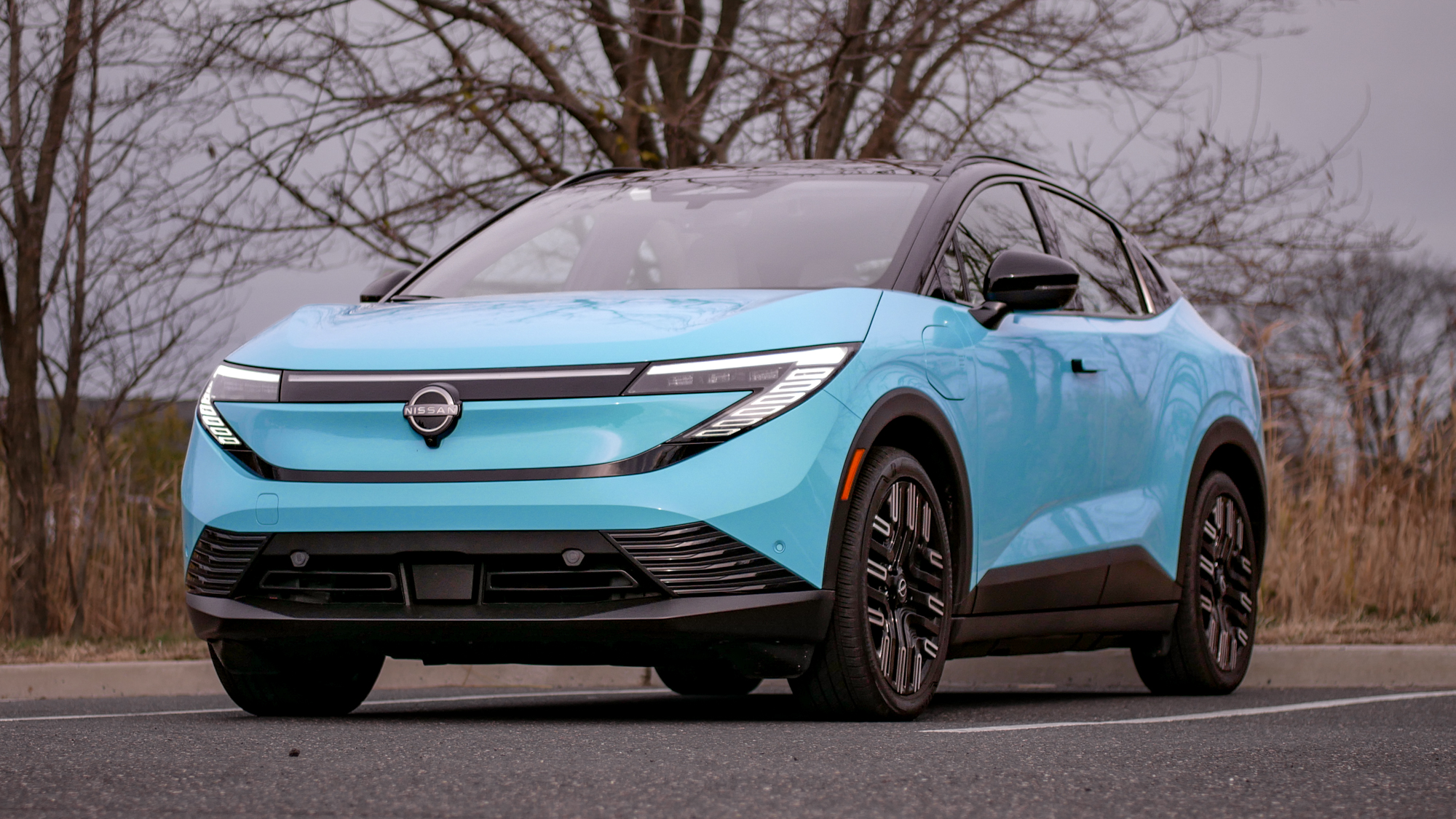iPhone 8 vs. Pixel 2: Why Apple Beats Google
We put the Pixel 2 and Pixel 2 XL head to head against the iPhone 8 and iPhone 8 Plus in several rounds of competition, and Apple has garnered a slight edge.
If you're looking for a quality flagship phone from either Apple or Google, both smartphone makers have you covered with their respective iPhone 8 and 8 Plus and the Pixel 2 and Pixel 2 XL flagships.
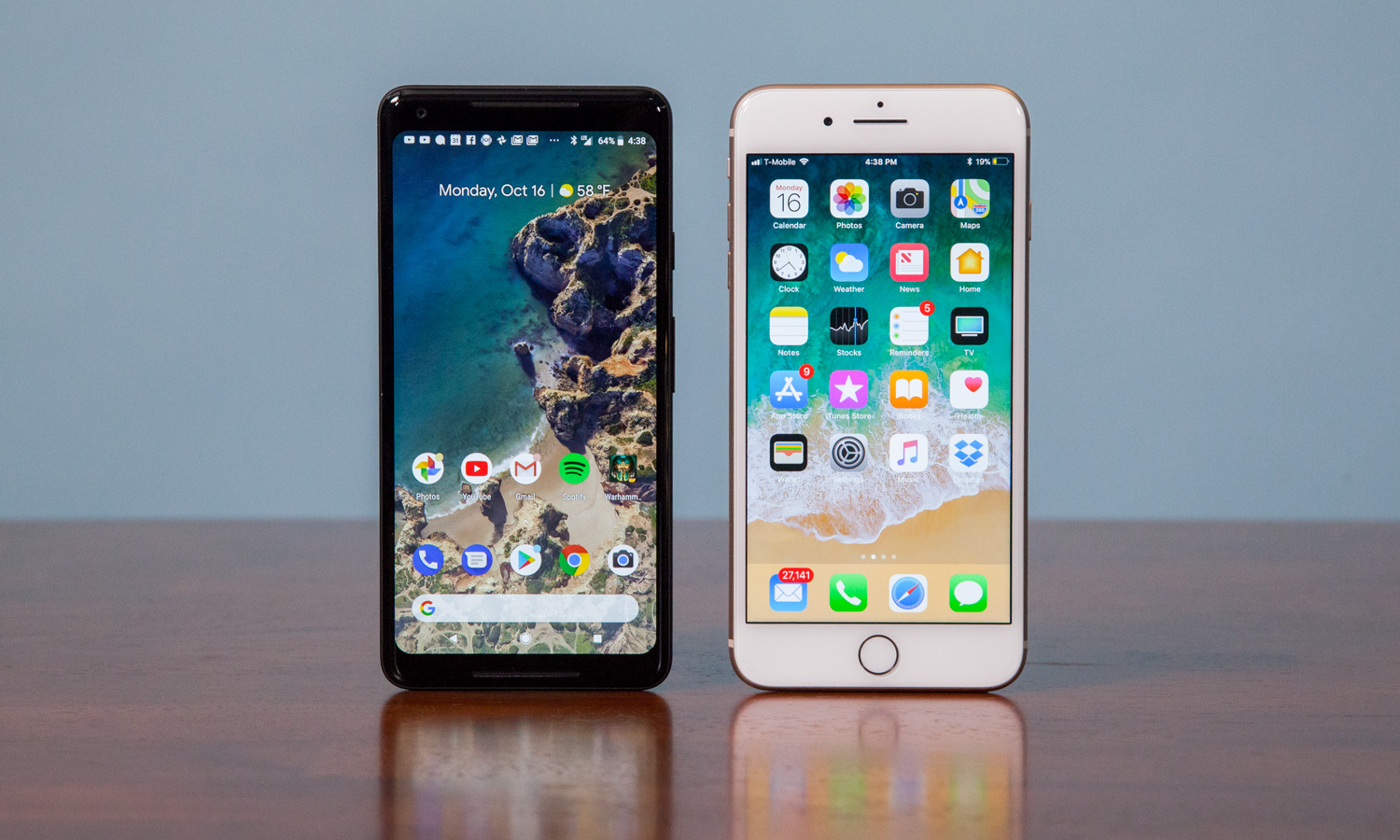
All of these devices offer great performance, top-notch cameras and long battery life, but when you drill deeper it's easier to see what makes these phones unique — and which handsets are best.
We put all four of these phones through seven rounds of competition, and the iPhone 8 and 8 Plus came out on top. But the Pixel 2 and Pixel 2 XL excel in certain categories that could sway your decision about which phone to get.
Design
Neither the iPhone 8 nor Pixel 2 is really a looker, but the new iPhones look better. The Pixel 2 XL stands out from the front because it has minimal bezels around the screen. It gives that phablet a more modern vibe. I'm not a fan of the mix of aluminum and glass on the back of the Pixel 2 and Pixel 2 XL, though.

The iPhone 8 and 8 Plus have all-glass backs that are more elegant, and they support wireless charging. Both the new iPhones and Pixel 2 are IP67 water resistant, but none of these flagships sport a headphone jack.
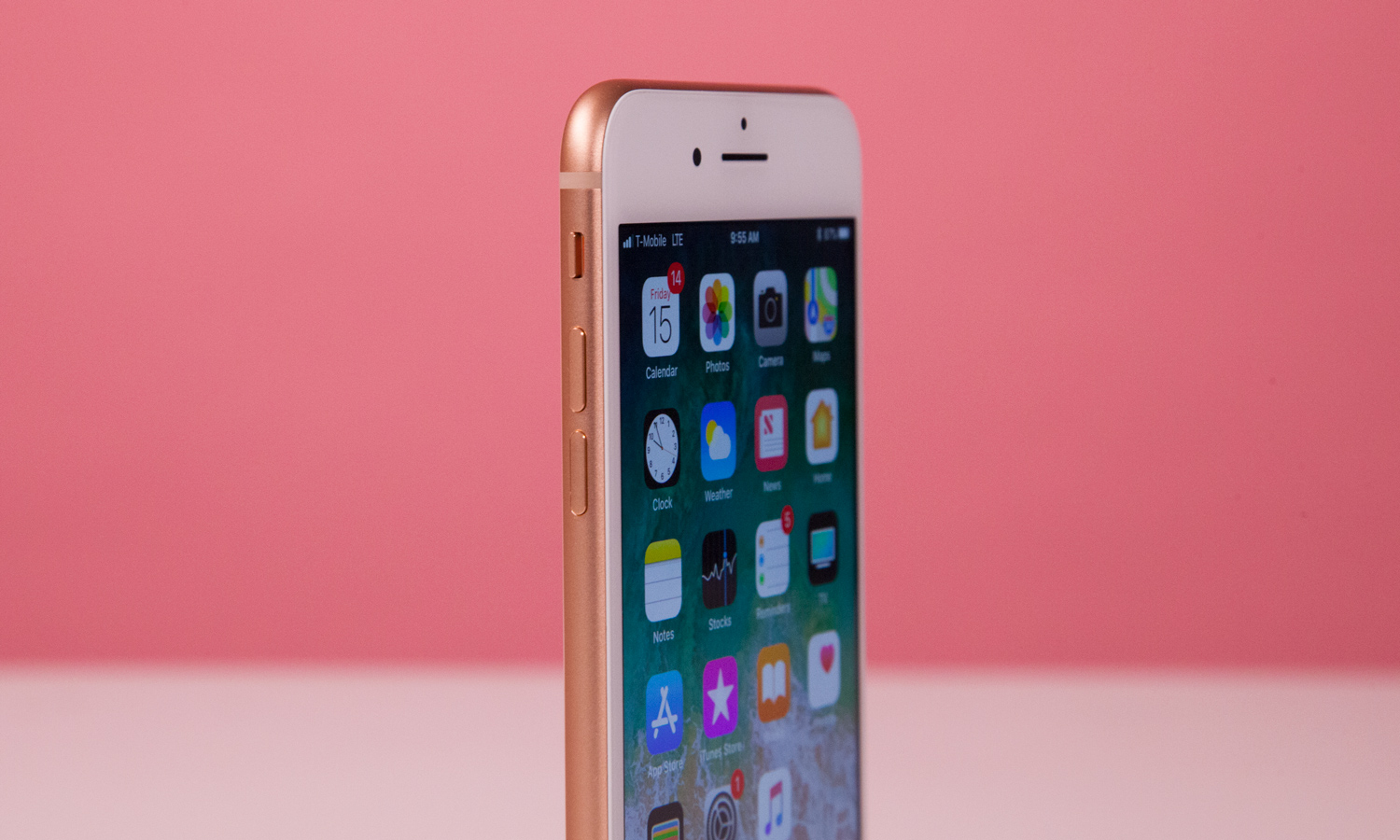
The color options look better on the iPhone 8 and 8 Plus, which include Silver, Gold and Space Gray. The only color option we like on the Pixel 2 is Kinda Blue, which has some pop, but the Just Black, Clearly White and Black and White look blah.

The Pixel 2 measures 5.7 x 2.7 x 0.3 inches and weighs 5.01 ounces, while the iPhone 8 is 5.5 x 2.7 x 0.29 inches and weighs 5.22 ounces. So Google gets points here for delivering a bigger 5-inch screen (versus 4.7 inches) in a lighter design.
Get instant access to breaking news, the hottest reviews, great deals and helpful tips.
The Pixel 2 XL delivers a 6-inch screen in a 6.2 x 3 x 0.3-inch package that weighs 6.2 ounces, while the iPhone 8 Plus (6.24 x 3.1 x 0.3 inches, 7.13 ounces) is taller and wider and heavier, despite having a smaller 5.5-inch screen.
Winner: iPhone 8. The iPhone 8 and 8 Plus look and feel more like their premium price tags.
Display
The Pixel 2 and Pixel 2 XL are a tale of two displays. While they are both OLED panels, the 6-inch XL model (2880 x 1440 pixels) suffers from some color quality issues, as we noticed a shift to a bluish tint when we tilted the phone. In addition, colors on the 5-inch Pixel 2 (1920 x 1080 pixels) look richer and more saturated, and whites are more of a pure white. Another report cites potential screen burn-in as an issue, but we haven't noticed it on our Pixel 2 XL unit.

With the 4.7-inch iPhone 8 (1334 x 750) and iPhone 8 Plus (1920 x 1080), the color quality is consistent across the two LCD screens, but Pixel 2 and Pixel 2 XL offer sharper images with higher resolutions.
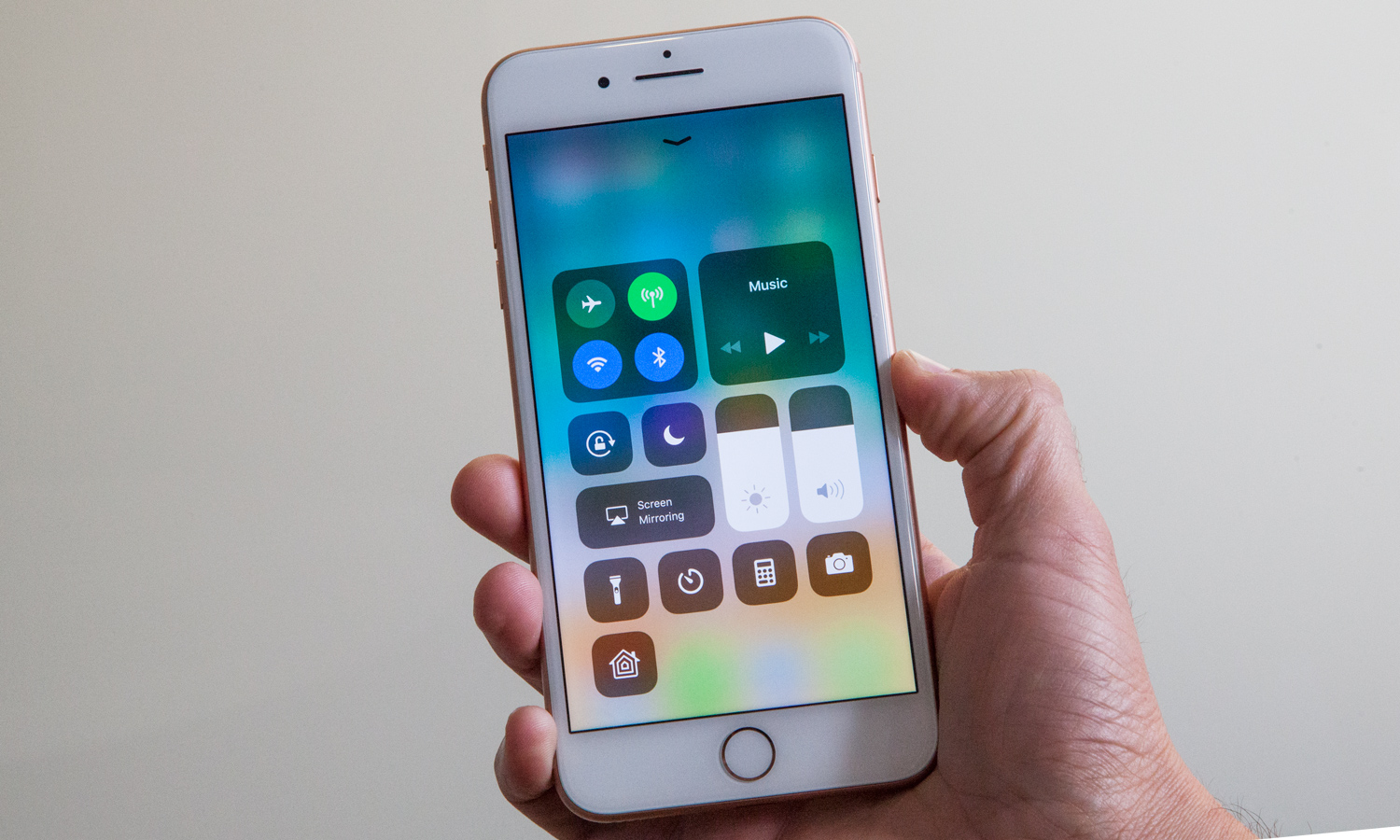
Unlike Google's phones, the new iPhones sport True Tone displays, which means the white balance on the screen automatically adjusts based on ambient light; this could make reading easier on the eyes.
MORE: Is the Pixel 2 XL's Screen Really That Bad? Here's Our Take
Winner: Draw. The Pixel 2 has the better screen of the two smaller phones, but the iPhone 8 Plus has the better large screen.
Cameras
After performing an in-depth camera face-off, we've come to the conclusion that the iPhone 8 and 8 Plus have the edge when it comes to sheer photo quality. Apple's handset delivered more vibrant colors and better contrast in a series of shots.
However, the Pixel 2 offers better detail and more consistent exposure. Plus, both the Pixel 2 and Pixel 2 XL are capable of taking Portrait shots that blur out the background from both the front and back cameras, thanks to advanced post processing.
The iPhone 8 Plus can do portraits with its dual back cameras, but its front camera won't support that feature, and forget about any Portrait mode with the iPhone 8. On the other hand, only the 8 Plus offers a true 2x optical zoom, and its portraits looked more natural than what either Pixel 2 phone produced.
Winner: iPhone 8. Especially if you get the Plus.
Performance
Sorry, Pixel fans, Android phone makers will be playing catch up for a while to Apple's A11 Bionic chip. This processor paced the iPhone to record-breaking results in synthetic benchmarks, but it also outpaced the Pixel 2 on real-world tests.
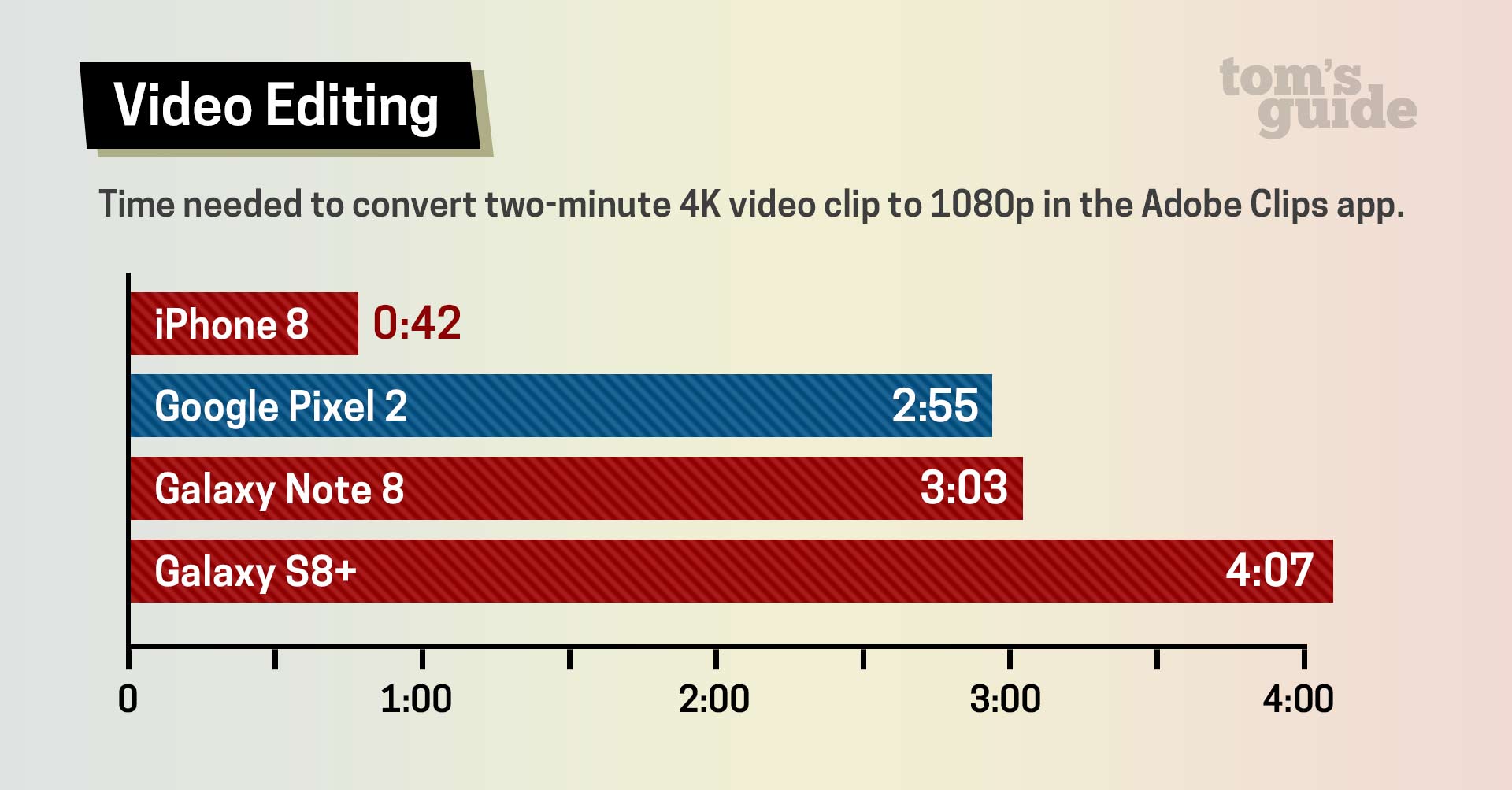
When editing a 4K video using the Adobe Clips app, for example, the Pixel 2 took 2 minutes and 55 seconds, while the iPhone 8 took just 42 seconds. While not as dramatic, the iPhone 8 took 0.74 seconds to open a 5.1 MB PDF, compared with 2 seconds for the Pixel 2.
MORE: iPhone 8 Is World's Fastest Phone (It's Not Even Close)
On Geekbench, which measures overall performance, the iPhone 8 hit 10,170, compared with 6,282 for the Pixel 2. Same story with 3DMark Ice Storm Unlimited, which measures graphics performance. The iPhone 8 notched 65,232, while the Pixel 2 mustered 38,800.
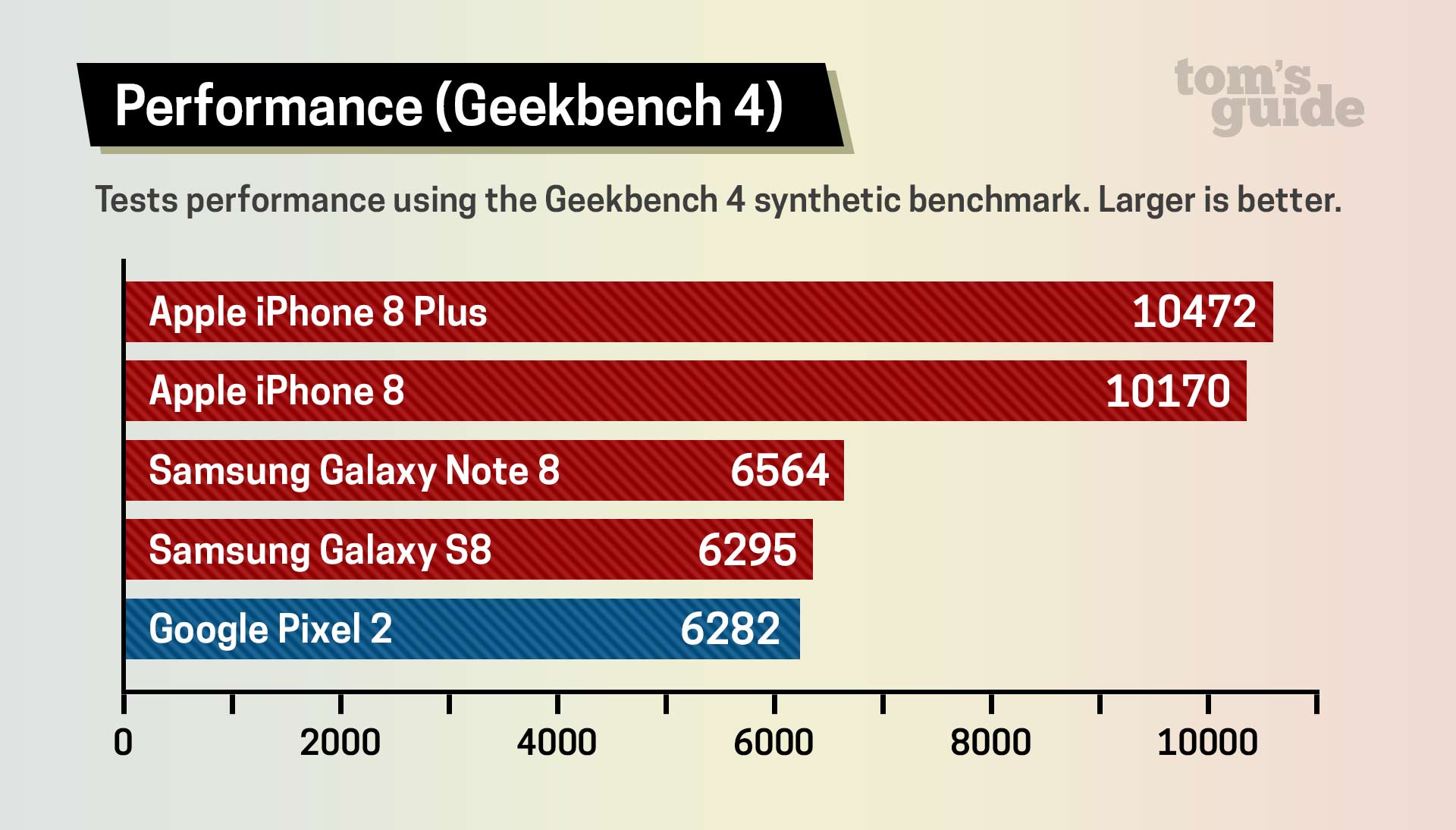
To be clear, the Pixel 2 and Pixel 2 XL are swifter in everyday use, but if you're buying a phone for the next few years and you want something that will be able to handle high-octane games and AR apps with ease, the iPhone 8 and 8 Plus are more future-proof.
Winner: iPhone 8. No contest
Battery Life
The Pixel 2 and Pixel 2 XL offer very impressive endurance. On the Tom's Guide Battery Test, which involves continuous web surfing over LTE, the Pixel 2 lasted 11 hours and 7 minutes, and the Pixel 2 hit 12:09.
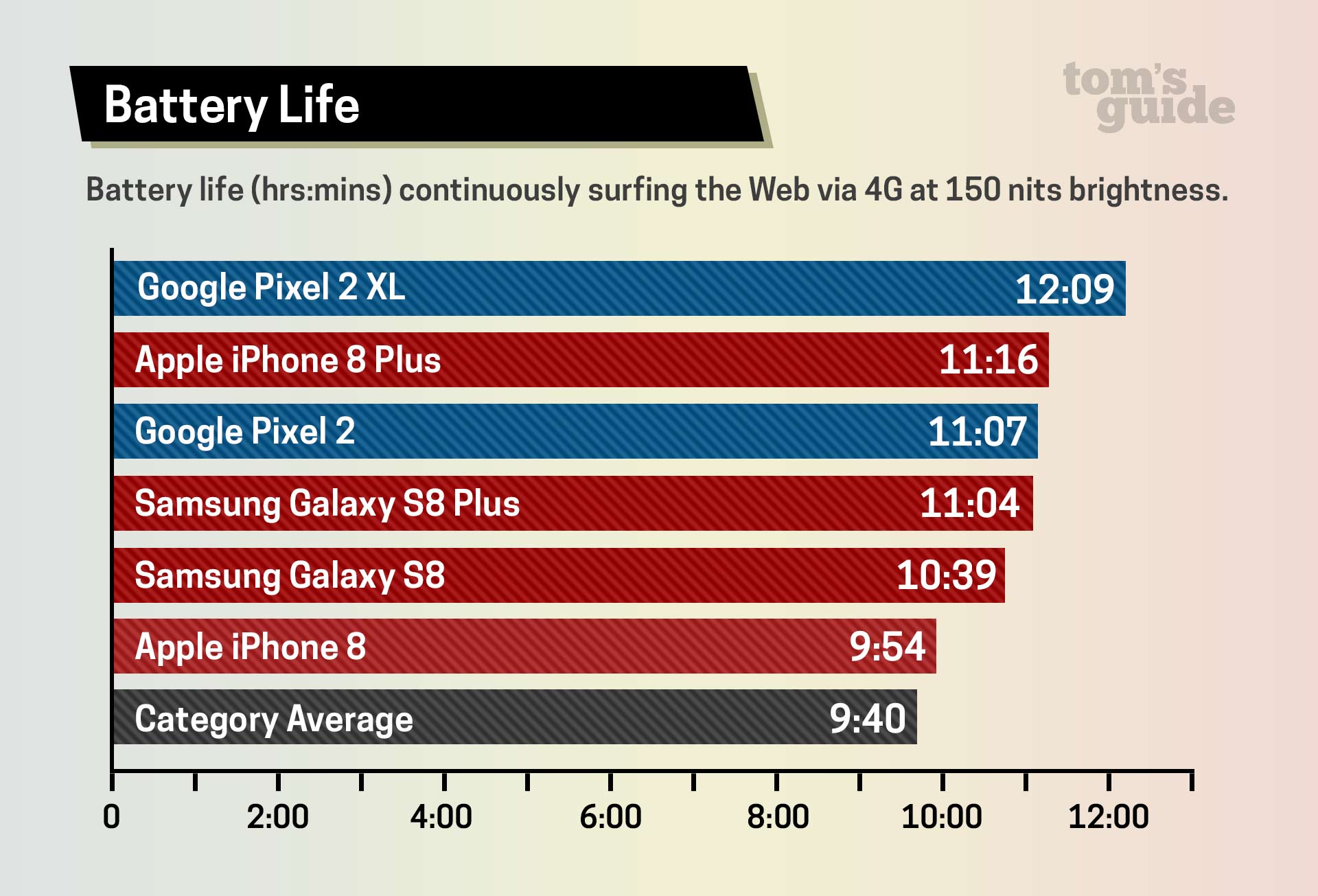
The iPhone 8 lasted only 9:54, while the iPhone 8 Plus ran out of power after 11:16. What's more, the Pixel 2 and Pixel 2 XL were using a Verizon SIM Card, and both iPhones were on T-Mobile. Generally, we see better battery life out of phones on T-Mobile's network; Google really must be doing something right to turn in that kind of performance.
MORE: Smartphones with the Longest Battery Life
Winner: Pixel 2 and Pixel 2 XL. They both last longer.
Special Features
The biggest special feature the iPhone 8 and iPhone 8 Plus have in their corner is wireless charging. The Pixel 2 and Pixel 2 XL offer fast wired charging, but they don't support the Qi standard, so they simply won't work with a growing number of wireless charging pads.

But the Pixel 2 and Pixel 2 XL offer more compelling special features overall, starting with the fact that both phones offer a Portrait mode on the front and back cameras. In addition, Google Assistant is smarter and more versatile than Siri, and you can access it with just a quick squeeze of the bottom of the Pixel 2 and Pixel 2 XL.

The cameras on Google's phones are smarter, too, as the new Google Lens feature can recognize objects (anything from landmarks to businesses to signs with phone numbers) so you can instantly act on that info. The new Pixels can even tell you what song is playing with their always-on displays, without you lifting a finger; the iPhone 8 and 8 Plus don't have always-on displays.
MORE: Google Could Finally Overtake Apple with AI Hardware Like This
The Pixel 2 and Pixel 2 XL extend their lead when you consider accessories, which include the new Daydream headset for VR and the new Pixel Buds that can translate foreign languages while you're holding a conversation.
Winner: Google Pixel 2 and Pixel 2 XL. Google's phones are smarter.
Value
Among flagship phones, the Pixel 2 is one of the better values, starting at a reasonable $649 with 64GB of storage. You can up that to 128GB for $100 more. The iPhone 8 starts at $699, and it will cost you an extra $150 to get 256GB of storage. (There's no 128GB option for the iPhone 8 or 8 Plus.)
The Pixel 2 XL starts at a fairly high $849 for 64GB, and you'll pay $949 for 128GB of storage. The iPhone 8 Plus has a lower starting price of $799, but you'll pay $949 at the top end for twice the storage of the Pixel 2 XL at 256GB.
Winner: Draw. The Pixel 2 is the better value than the iPhone 8, but the iPhone 8 Plus is cheaper than the Pixel 2 XL.
Overall Winner: iPhone 8 and 8 Plus
With a score of 5 to 4, the iPhone 8 and 8 Plus give Apple the win in this face-off. The iPhone 8's strongest wins come in the camera and performance categories, and it has a slight edge in design. It's also worth noting that only the new iPhones do wireless charging.
| iPhone 8 & 8 Plus | Google Pixel 2 & Pixel 2 XL | |
| Design | ✓ | |
| Display | ✓ | ✓ |
| Cameras | ✓ | |
| Performance | ✓ | |
| Battery Life | ✓ | |
| Special Features | ✓ | |
| Value | ✓ | ✓ |
| Overall | 5 | 4 |
However, the Pixel 2 and Pixel 2 XL offer longer battery life, as well as richer and sharper OLED screens, even though the XL model's panel suffers from some color quality issues. The Pixel 2 and Pixel 2 XL also deserve your attention if you want the better digital assistant and smarter cameras with features like Google Lens.
If you're really on the fence, the Pixel 2 is the better value of the two smaller phones, while the iPhone 8 Plus and its dual cameras would be our top pick among the two bigger handsets.
Credit: Shaun Lucas/Tom's Guide
Mark Spoonauer is the global editor in chief of Tom's Guide and has covered technology for over 20 years. In addition to overseeing the direction of Tom's Guide, Mark specializes in covering all things mobile, having reviewed dozens of smartphones and other gadgets. He has spoken at key industry events and appears regularly on TV to discuss the latest trends, including Cheddar, Fox Business and other outlets. Mark was previously editor in chief of Laptop Mag, and his work has appeared in Wired, Popular Science and Inc. Follow him on Twitter at @mspoonauer.
-
citykangaroo I agree that the iPhone has the better processor.Reply
But the iPhone doesn't have the best camera. The Pixel 2 camera has better dynamic range, it doesn't blow out in bright spots like the iPhone does (any rudimentary highlight test will show this), it has the best image stabilisation, faster Dual-Pixel autofocus, and the ability to do portrait mode while external lenses are attached - such as those from Moment Inc. -
Mark Spoonauer Thanks for your comment. There's a lot of disagreement around the Pixel 2 vs iPhone 8 camera. I agree that the Pixel 2 camera excels in some ways and I recommend it without hesitation. The sheer detail and more even exposure are great. But the iPhone 8 produces brighter and more vibrant colors, and it's Portrait mode not only looks more natural, you can preview the effect before you shoot. Some shots do look overexposed in spots, though, as you mention.Reply
20307359 said:I agree that the iPhone has the better processor.
But the iPhone doesn't have the best camera. The Pixel 2 camera has better dynamic range, it doesn't blow out in bright spots like the iPhone does (any rudimentary highlight test will show this), it has the best image stabilisation, faster Dual-Pixel autofocus, and the ability to do portrait mode while external lenses are attached - such as those from Moment Inc.
-
jacksmith21006 Really comes down to what is important to you. If you want the best camera you can get on a smartphone then you buy a Pixel. If you want iOS you do not. If you want Android and fluid experience is important to you then you buy a PixelReply
Personally I had iPhones since the 3G so the fluid nature of the Pixel was top on my list and wanted Android. So purchased a Pixel 2 XL. -
Mark Spoonauer If you don't mind me asking, how are you liking it so far? Any complaints about screen quality in terms of colors or audio crackling issues when making calls as some have reported?Reply
20307447 said:Really comes down to what is important to you. If you want the best camera you can get on a smartphone then you buy a Pixel. If you want iOS you do not. If you want Android and fluid experience is important to you then you buy a Pixel
Personally I had iPhones since the 3G so the fluid nature of the Pixel was top on my list and wanted Android. So purchased a Pixel 2 XL.
-
pixel56 If you like bezels, the iphone 8 is great, the pixel 2 XL is a better looking phone than either iphone 8 or 8 plusReply
geekbench scores are kinda like car tests for the 1/4 mile, no one floors their car for a 1/4 mile in daily use... here is a video review of speed and the pixel performs very close and beats the 8 in some tests:
https://9to5google.com/2017/10/24/googles-pixel-2-xl-mostly-keeps-up-with-iphone-8-plus-in-speed-test-video/
seems like the Pixel camera outperforms the iphone 8 in this review:
http://www.businessinsider.com/apple-iphone-8-plus-vs-google-pixel-2-xl-camera-comparison-2017-10/#in-this-shot-both-the-pixel-and-iphone-took-great-photos-1
google assistant beats SIRI like a rented mule, pixe lis a "smarter" smart phone period, with lens etc. wait till google unlocks the the visual core in android 8.1 -
pixel56 tom's guide is a good source for info but generally favor apple from what i have read here over the years....look at the links above from other sources for a different view....Reply -
k negi I do not agree with your camera comparison. You didn't mention low light photography. iPhone 8 camera is nowhere good when it comes to low light photographyReply -
pixel56 Just this am my wife took a pic with iphone 8 plus, it was still dark but she wanted ot take a pic of my daughter in her school outfit, picture was dark and very warm... I went out with the pixel XL 1st generation and it was seriously night and day, i almost wonder if her flash didnt go off it was so badReply -
pixel56 https://www.androidauthority.com/pixel-visual-core-808182/Reply
this might change the game even more -
pixel56 Reply20308346 said:I do not agree with your camera comparison. You didn't mention low light photography. iPhone 8 camera is nowhere good when it comes to low light photography
you are right in my 1st hand experience with iphone 8 plus and my Pixel XL 1

